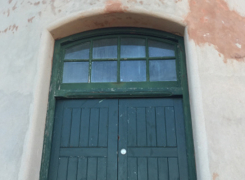I want to do work on my lot. Do I need a By-law?
Original article by Allison Benson 06.04.18 – See it online here
The simple answer is that it depends on the type of work you would like to do and what by-laws apply to your scheme.
The 2015 reforms brought in a regime that allows for three types of works.
The first category is “cosmetic works”. Lot owners are allowed to conduct “cosmetic works” to the common property in connection with their lot. Permission to conduct the cosmetic work is not required. Cosmetic work is defined as including (but not being limited to) the following work:
- installing or replacing hooks, nails or screws for hanging paintings and other things on walls,
- installing or replacing handrails,
- painting,
- filling minor holes and cracks in internal walls,
- laying carpet,
- installing or replacing built-in wardrobes,
- installing or replacing internal blinds and curtains,
- any other work prescribed by the regulations for the purposes of section 109 of the Strata Schemes Management Act 2015.
At present the regulations do not specify any other types of cosmetic works.
The second category or works is called “minor renovations”. If the work you would like to do included any of the following work it is considered to be “minor renovations“:
- renovating a kitchen,
- changing recessed light fittings,
- installing or replacing wood or other hard floors,
- installing or replacing wiring or cabling or power or access points,
- work involving reconfiguring walls,
- removing carpet or other soft floor coverings to expose underlying wooden or other hard floors,
- installing a rainwater tank,
- installing a clothesline,
- installing a reverse cycle split system air conditioner,
- installing double or triple glazed windows,
- installing a heat pump,
- installing ceiling insulation.
Minor renovations do need permission from the owners corporation however the Act sets out the steps. Permission is granted by an ordinary resolution of the owners corporation being passed at a general meeting. If your scheme has passed a by-law to delegate the authority to authorise these works to the strata committee then the strata committee may also hold a meeting to pass a resolution to authorise the works. You only need 51% of the strata committee or 51% of the owners corporation to vote in favour of your works for the resolution to be passed.
A by-law is not required to authorise this type of work however your scheme may have a by-law that regulates the conduct of any work, in which case the conditions in that by-law should be followed.
The third category involves more serious works. These works require a by-law to be passed to approve them. These are works that involve:
- work involving structural changes,
- work that changes the external appearance of a lot, including the installation of an external access ramp,
- work involving waterproofing,
- work for which consent or another approval is required under any other Act.
Note that if an external condensing unit for an air conditioner is installed so that it changes the external appearance of a lot or, if development application for the work is required from Council or your local consent authority then this work falls into the above categories.
Some owners corporations have recently passed by-laws that authorize blanket types of work that would otherwise fall within the third category of works. These catch-all by-laws should be used with caution. Why?
- In many instances the by-laws will describe the works to be conducted generally. If for instance the works are described as bathroom and kitchen renovations then what does the by-law actually authorize? If Mrs Smith in lot 1 wanted to renovate her bathroom and knock out a structural wall in the process is that included? It is not certain in the example given.
- Lot owners may conduct more than the works described in, and authorized by, the by-law – this is a type of work creep. An example is when a simple awning installation turns into new sliding doors and decking.
- If the by-law authorized work that changes the external appearance of the lot what controls are in place to ensure that the lot owner does not radically (and potentially detrimentally) change the external appearance of the building?
If you are uncertain about which category of work your proposed work falls into or whether an existing by-law applies then you should seek advice before conducting the work.








